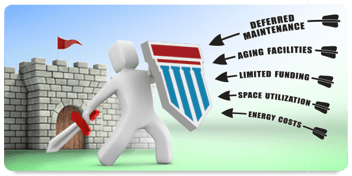Managing county facilities is no small feat. From maintaining government buildings and parks to ensuring public safety and sustainability, the stakes are high. Yet many counties still rely on outdated systems that leave them vulnerable to inefficiencies and rising costs.
Imagine a tool that could centralize all these responsibilities into one powerful platform—eliminating wasted time, minimizing risks, and maximizing resources. This is exactly what an Integrated Workplace Management System (IWMS) offers. In this article, we explore why counties need an IWMS to transform their facility management and future-proof their operations.
Table of Contents
- Streamlined Space Management and Optimization
- Efficient Asset and Maintenance Management
- Real-Time Data and Analytics for Better Decision-Making
- Cost Savings Through Automation and Efficiency
- Scalable Solutions for Growing Counties
- Conclusion
Comprehensive Facility Management in One Platform
One of the most significant benefits of an IWMS is that it consolidates various facility management functions into a single platform. Counties often manage multiple facilities, including courthouses, administrative buildings, libraries, and parks. Without an integrated system, managing these facilities can be fragmented and inefficient. An IWMS offers a centralized solution where all aspects of facility management—such as maintenance, space planning, asset management, and sustainability—are handled in one place.
Streamlined Space Management and Optimization
Counties need to ensure that their public spaces are being utilized effectively. Whether it’s optimizing office space in government buildings or ensuring that community centers are used efficiently, an IWMS provides detailed insights into space utilization. This allows counties to optimize space allocation, avoid overuse or underuse, and make informed decisions about renovations, expansions, or consolidations.
Efficient Asset and Maintenance Management
Maintaining county facilities involves tracking numerous assets, from HVAC systems to lighting, plumbing, and technology infrastructure. An IWMS enables counties to automate preventive maintenance, schedule repairs, and track asset performance throughout their lifecycle. This proactive approach reduces downtime, extends the life of equipment, and minimizes unexpected repair costs.
.png?width=754&height=363&name=Untitled_design_(12).png)
Real-Time Data and Analytics for Better Decision-Making
Informed decision-making is crucial for efficient county operations. An IWMS provides real-time data and analytics that offer valuable insights into facility performance, space utilization, energy consumption, and maintenance needs. Counties can use this data to make strategic decisions about facility upgrades, resource allocation, and long-term planning, ensuring that taxpayer dollars are used efficiently.
Cost Savings Through Automation and Efficiency
One of the biggest advantages of implementing an IWMS is the potential for cost savings. By automating routine tasks such as maintenance scheduling, space allocation, and energy monitoring, counties can reduce manual labor, minimize errors, and optimize resource allocation. The efficiency gained from using an IWMS translates directly into cost savings, making it a smart investment for any county looking to maximize its budget.
Scalable Solutions for Growing Counties
As counties grow and their facility management needs expand, they require scalable solutions that can adapt to changing demands. An IWMS is designed to be flexible and scalable, allowing counties to add new facilities, expand services, or incorporate emerging technologies without needing to overhaul their entire system. This ensures that the IWMS can continue to serve the county’s needs well into the future.
Conclusion
Counties are tasked with managing a wide array of public facilities that serve their communities. From reducing operational costs to improving sustainability and ensuring regulatory compliance, the challenges are vast. An Integrated Workplace Management System (IWMS) provides counties with the tools they need to manage these challenges effectively. By centralizing operations, optimizing space and assets, and providing real-time data for decision-making, an IWMS is a strategic investment that can transform county facility management.
Counties that implement an IWMS not only enhance their operational efficiency but also ensure that they are providing the best possible service to their communities—today and in the future.
"An Integrated Workplace Management System is more than just software—it's the key to unlocking efficiency, sustainability, and cost savings for counties, empowering them to manage public facilities with the precision and foresight needed for the future."
Would you like to learn more?
Related Resources:
- Facilities Management Overview
- What is the Best IWMS Software for Government?
- The State of Alaska Tackles Statewide Deferred Maintenance
- Why Capital Budgeting Software is Critical in Government Facilities
- Three Keys to Effective Space Management
- Facilities System Integration
- FacilityForce's IWMS Solution




